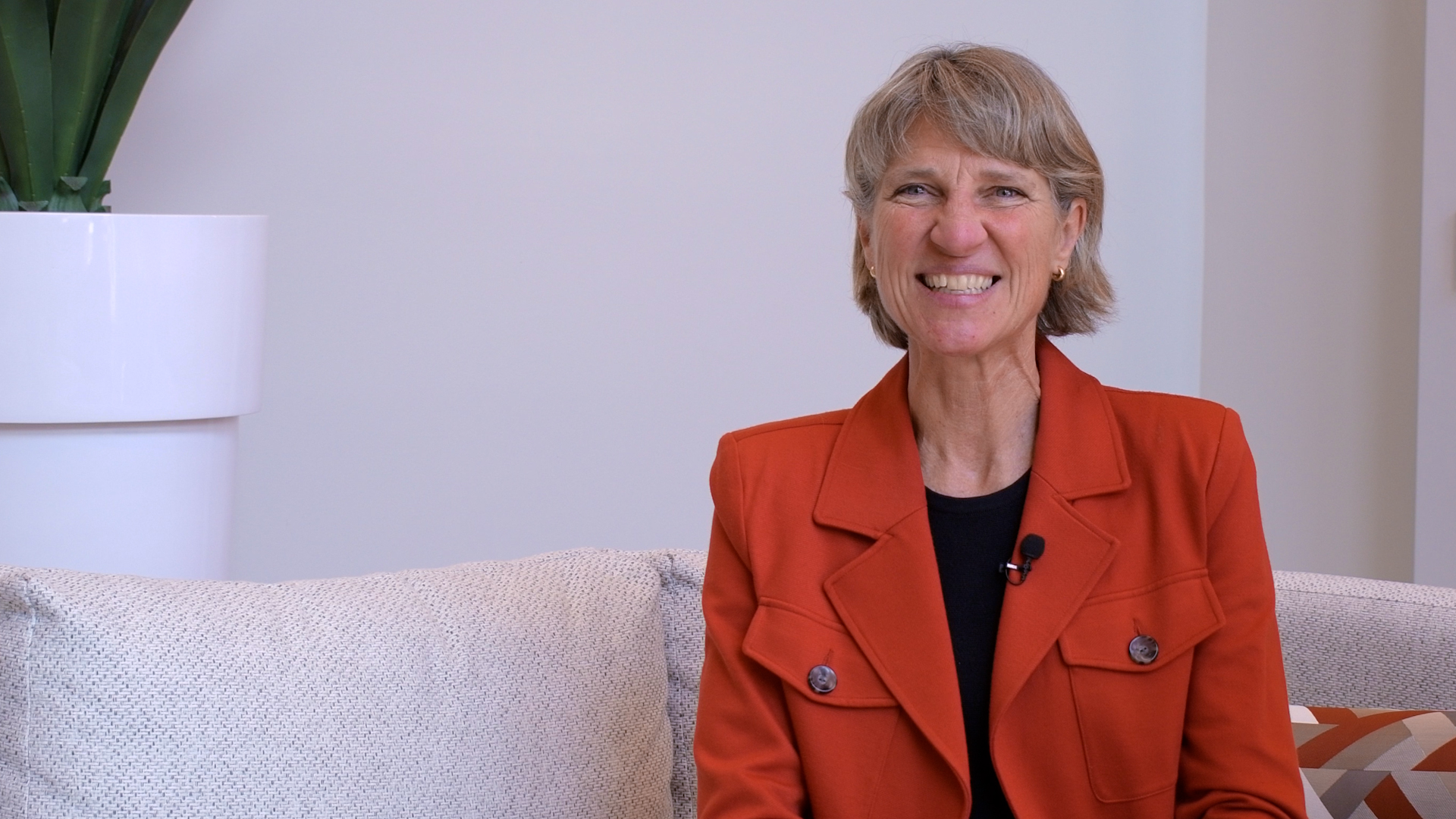Study of Project AIM Published by Associate Dean Paola Sztajn Examines Approach to Strengthen Professional Development Programs

A new study co-authored by Paola Sztajn, Ph.D., associate dean for research and innovation at the NC State College of Education, aims to strengthen future professional development programs through analysis of the design and success of Project AIM.
Project AIM, which is a partnership with Horizon Research, Inc. and began in 2010 through funding from the National Science Foundation, is a year-long professional development program to help elementary school teachers learn to promote mathematics discourse for all learners using strategies adapted from literacy instruction to mathematics.
For several implementations of Project AIM, at the end of professional development, participating teachers demonstrated a better understanding of mathematics discourse, were better prepared to implement high-quality discourse and reported attending to the various dimensions of discourse in their practice. Participants also significantly outperformed teachers who did not participate in the professional development program. Project AIM was chosen as the topic of analysis for Sztajn’s study because of its demonstrated impact on teachers.
“Decomposing Practice in Teacher Professional Development: Examining Sequences of Learning Activities,” which was made available online as a pre-publication through Teaching and Teacher Education in March, examines the professional development design, activities and the sequencing of professional learning tasks in Project AIM to understand the learning opportunities made available to teachers.
Analysis was conducted using decomposition of practice — a tenant of the pedagogy of practice that involves breaking down complex practice into meaningful components with the intention of supporting novices in understanding separate components before they are integrated into a more complex practice.
While most previous research surrounding decomposition of practice and pedagogy of practice focused on their use in designing pre-service teacher education, Sztajns’s study aimed to consider their role in designing high-quality professional development for practicing teachers.
“Our argument is that when an in-service teacher learns a practice that is new to their repertoire, it is OK to use the same tools and the same pedagogies of practice that we use with pre-service teachers,” Sztajn said. “New practices are new practices, and if you haven’t done it before, you need to learn it effectively.”
The “Decomposing Practice” study examined professional development facilitator session plans, teacher handouts, teacher questionnaires and a video analysis assessment from Project AIM’s fourth year. The materials were retrospectively analyzed using a new theoretical tool to determine what levels of decomposition of practice were present, how they were sequenced and the changes that occurred in teachers’ beliefs, knowledge and practice at different levels.
The study found that sequencing of professional learning tasks through Project AIM most often started at the organizational level, using the Mathematics Teaching Guide developed for the project to organize the lesson into different phases. The use of the Mathematics Teaching Guide supports attention to a particular phase of a mathematics lesson. The professional development then moved on to the technique level, in which teachers used a mathematics discourse technique for a specific purpose within a phase of a lesson. The process concluded at the domain level, when teachers used the Mathematics Discourse Matrix to connect ideas back to theoretical concepts about high-quality discourse.
The design of the program, the study states, gave teachers an opportunity to establish the purpose of discourse and examine, experience and implement specific strategies before discussing the theoretical aspects of the practice, which is atypical for many programs.
Many other professional development programs begin with understanding the full theory before moving to the practical approach later. The organization-technique-domain (OTD) approach, Sztajn said, provides teachers with structure and purpose, as well as techniques to try in a controlled implementation setting in their classrooms before connecting those experiences to the more complex theory.
“We think the contribution of this paper is showing that when teachers understand why they’re doing something, try it carefully in their practice and connect it back to theory, they actually learn both the techniques and the theory together,” she said.
Because teachers who participated in Project AIM demonstrated gains in their understanding of mathematics discourse, the study concludes that future professional development programs could be strengthened by adopting an OTD instructional sequence to support connections between theory and techniques. They propose that testing this design approach is a worthwhile follow up from their findings.
Sztajn and the Project AIM team will be further sharing this professional development design strategy through the release of Activating Math Talk: 11 Purposeful Techniques for Your Elementary Students, a book that will be published by Corwin Press this summer.
The book will precede a new, hybrid professional development model being developed for use by school districts around the world. Through this model, which will be run through NC State’s Distance and Online Learning Technology Applications (DELTA), districts will be able to register to have a math leadership team member trained to facilitate Project AIM’s professional development course for their elementary school teachers. They can then run the professional development.
“It is exactly the same professional development as Project AIM, but without us,” Sztajn said. “Districts can basically have access to our learning management system and they can implement it once their facilitators are certified by our team.”
Three Levels of Decomposition of Practice Identified in Project AIM
- Organization Level: The Mathematics Teaching Guide for Responsive Discourse, which provided structure for lessons that promote high-quality discourse using a three-phase structure for promoting students’ conceptual understanding. “Teachers increased their attention to lesson planning and also learned to use evidence more frequently to substantiate their claims about instruction.”
- Technique Level: The Discourse Strategy Handout, which emphasized discourse dimensions presented in the Mathematics Discourse Matrix and connected to the purposes of the lessons in the Mathematics Teaching Guide, providing step-by-step procedures for implementation. “Teachers learned and used the strategies introduced in professional development. Further, students in the classrooms of participating teachers used the strategies, even without the teachers’ prompts, which means the strategies learned became an integral part of these teachers’ classrooms.”
- Domain Level: The Mathematics Discourse Matrix, which depicted four different types of classroom discourse based upon teacher and student engagement with four dimensions of discourse. “Teachers became attuned to discourse components represented in the Mathematics Discourse Matrix and developed a greater propensity to support their observations about classroom discourse with specific evidence and analysis using the dimensions presented in the Matrix.”
[button]Read the Full Article[/button]
- Categories:


